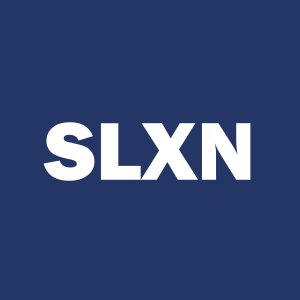[8-K] Silexion Therapeutics Corp Reports Material Event
Silexion Therapeutics (SLXN) filed an 8-K announcing a 1-for-15 reverse share split effective after the 28-Jul-25 close. Authorized capital stays US$20,000 but is now divided into 1,481,482 ordinary shares; par value rises to US$0.0135. All issued and outstanding shares are reduced proportionally and will begin trading on a split-adjusted basis under the same ticker at the 29-Jul-25 open. The new ordinary-share CUSIP is G1281K 130.
The company simultaneously delivered a Warrant Adjustment Notice. Each pre-split warrant is now exercisable for 1/15th of a share, and the exercise price is lifted 15× to US$1,552.50 per post-split share. Fractional entitlements will be rounded up at the broker (DTC participant) level. Warrant CUSIP (G1281K 114) and ticker (SLXNW) are unchanged.
The split was approved at the 14-Jul-25 AGM and effected through an amendment to the Amended & Restated Memorandum of Association, filed 28-Jul-25. Items 3.03 and 5.03 detail the warrant modifications and charter amendment, while Item 8.01 incorporates these events by reference.
- Maintains Nasdaq compliance by boosting per-share price above minimum listing threshold.
- Dilution risk reduced as warrant strike price rises to US$1,552.50, making exercise unlikely near term.
- Reverse split stigma may be perceived as a signal of weak share performance or financial distress.
- Higher nominal share price can reduce liquidity, potentially widening bid-ask spreads for investors.
Insights
TL;DR: Reverse split reduces share count 15×, adjusts warrants; aids Nasdaq compliance but signals underlying price weakness.
The 1-for-15 reverse split should immediately lift SLXN’s per-share price, helping the company avoid delisting risk on Nasdaq. Economics are neutral because ownership percentages remain unchanged and warrant terms are mechanically adjusted. However, reverse splits are often viewed as a negative signal that management could not organically support the share price. The extremely high post-split warrant strike (US$1,552.50) effectively removes near-term dilution pressure, which can be modestly positive for existing shareholders but also limits a low-cost capital source. No financial performance data were disclosed, so valuation impact hinges on future trading dynamics rather than fundamentals.
TL;DR: Charter amended; mechanics appear procedurally sound and shareholder-approved, limiting legal or governance risk.
The board executed the shareholder-approved split via a timely filing with the Cayman registry, demonstrating adherence to corporate procedure. Rounding up fractional shares reduces administrative complexity and potential shareholder complaints. Continuity of tickers and warrant CUSIPs minimizes market confusion. From a governance standpoint, disclosure is complete—exhibits include both the Memorandum Amendment and Warrant Notice—mitigating litigation exposure. Impact to governance profile is neutral.







